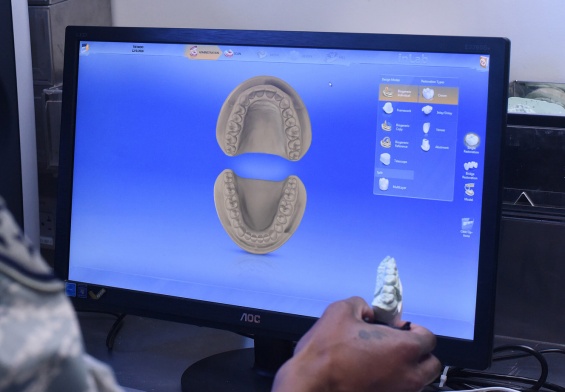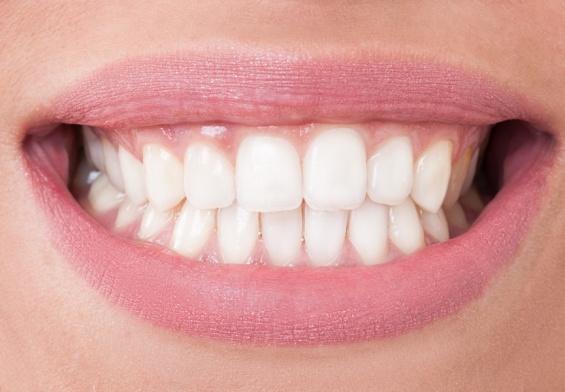Tongue thrust is more than a quirky habit. It’s a muscle pattern disorder that can lead to lasting issues with dental alignment, speech, and even breathing. Recognizing its signs and symptoms goes a long way in preventing complications.
Unusual tongue posture or recurring dental issues can be huge red flags of tongue thrust. Looking out for these signs gives you the chance to intervene before it affects your long-term oral health. That’ll prevent orthodontic relapse, improve your speech clarity, and stop you from needing more invasive treatment in the future.
This post will break down what tongue thrust is and some of the most common signs to look out for. The sooner it’s identified, the easier it is to manage through therapy or corrective care.
What Is Tongue Thrust?
Tongue thrust refers to the forward movement of the tongue between or against the teeth during swallowing, speaking, or even at rest. It’s anorofacial myofunctional disorder (OMD), more common in children but also affecting adults.
It’s normal for infants to have tongue thrust, but it usually goes away on its own by 6 months of age. If it sticks around longer than that, it interferes with the alignment of teeth and the development of proper speech or bite patterns.
Common characteristics of tongue thrust include a protruding tongue during swallowing, a forward tongue resting posture, and speech distortions. The tongue may press against the front teeth or slip between them, especially during eating or speaking.
Children or adults with tongue thrust often have an open-mouth posture at rest and may struggle with closing their lips.
If left untreated, tongue thrust can lead to a range of complications, including:
- Dental misalignment such as open bite or increased overjet (protruding upper front teeth)
- Speech issues, particularly lisps and difficulty articulating certain sounds
- Orthodontic relapse after braces or other alignment treatments
- Altered facial growth, especially in children during development
- Breathing difficulties linked to poor tongue posture or airway obstruction
- Inefficient swallowing and problems with feeding mechanics
Recognizing and addressing tongue thrust early helps prevent these outcomes. It also supports healthier long-term oral function and development.
1. Do You Have a Habitual Open-Mouth Resting Posture?
One of the earliest indicators of tongue thrust is how your mouth rests when you’re not talking or eating. If your lips are frequently parted and your jaw slightly slack, this could indicate an orofacial myofunctional disorder (OMD).
Tongue thrust is associated with an open-mouth posture at rest due to improper nasal breathing or low tongue positioning.
These two behaviors reinforce each other. When the mouth stays open, the tongue often drops forward or downward to maintain balance, instead of against the palate.
In this lowered or forward position, the tongue is more likely to press against or between the teeth, leading to or worsening tongue thrust. The more frequently this posture is maintained, the more it influences facial growth, narrows the palate, and disrupts normal dental development.
2. Are You Pushing Your Tongue Forward When You Swallow?
People with tongue thrust often swallow by pushing the tongue against or between the front teeth. This is known as a tongue thrust swallow, and it can occur hundreds to thousands of times each day.
Research estimates that a typical person swallows saliva around 1,200 to 3,000 times daily. When the tongue thrusts forward during each of those swallows, even the low pressure it exerts can shift teeth out of alignment over time.
This forward motion is often an adaptation to achieve an oral seal when the lips don’t close properly or when structural barriers prevent the tongue and palate from making the contact they’re supposed to. In these cases, the tongue compensates by thrusting forward to close the gap.
Over time, this pattern reinforces itself and contributes to dental malocclusions, especially increased overjet and open bites.
You can check for this pattern by watching someone (or yourself) swallow saliva. If the tongue pushes forward, especially between the teeth, it may be a sign of tongue thrust.
3. Do You Have Dental Changes Like Overjet or Open Bite?
Tongue thrusting can lead to specific dental issues, most notably overjet and open bite.
Overjet occurs when the upper front teeth protrude significantly beyond the lower front teeth. Open bite refers to a lack of vertical overlap between the upper and lower front teeth, resulting in a visible gap when the mouth is closed.
These changes happen because the tongue consistently exerts pressure against or between the teeth when swallowing and at rest. The tongue is pushing forward thousands of times per day, pushing the upper teeth forward and the lower teeth backward. This leads to overjet, an extended horizontal distance between the upper and lower teeth.
At the same time, if the tongue rests between the front teeth instead of behind them, it can prevent them from erupting properly. This is an open bite.
Both conditions can make it harder to bite into food, pronounce certain sounds, and maintain orthodontic corrections. These problems will stick around or come back if the underlying issue, tongue thrust, isn’t addressed.
4. Do You Notice Speech Difficulties or Lisping?
Speech articulation disorders are commonly associated with tongue thrust. This happens when the tongue moves too far forward during the production of certain sounds, such as /s/ and /z/. The sounds might sound “slushy” or “whistled” as a result.
This is known as an interdental or frontal lisp, where the tongue pushes between the teeth instead of staying behind them.
Tongue thrust can also affect other sounds that need accurate tongue placement along the alveolar ridge, such as /t/, /d/, /l/, and /n/. When the tongue doesn’t achieve proper contact with the palate or behind the teeth, it affects the resulting sound. They may be muffled, distorted, or imprecise.
These issues are noticeable in children who are developing speech but can persist into adolescence or adulthood.
The incorrect tongue posture that causes these speech issues often stems from a broader pattern of orofacial muscle imbalance. Without intervention, these patterns can become habitual and more difficult to correct over time.
5. Are You a Mouth Breather or Have Allergies?
If you regularly breathe through your mouth, it can significantly affect your tongue posture and lead to tongue thrust. Proper oral function depends on nasal breathing, which keeps the tongue resting against the palate.
When nasal breathing is restricted, the body compensates by mouth breathing. That often causes the tongue to drop to the floor of the mouth or move forward between the teeth.
This low or forward tongue position disrupts the natural balance of forces in the mouth. Over time, it can train the tongue to push forward during swallowing or speech, reinforcing a tongue thrust pattern.
In many adults, these habits become so ingrained that they continue long after the original cause has resolved.
Mouth breathing is more than just a symptom. It’s often a huge contributor to orofacial changes. It can lead to a longer facial structure, narrow dental arches, open bites, and poor tongue-to-palate contact.
If you notice that your lips are frequently parted, especially during rest or sleep, or if you struggle to breathe comfortably through your nose, it may be a sign that your breathing habits are playing a role in persistent tongue thrust.
How Is Tongue Thrust Diagnosed and Treated in Adults?
Tongue thrust in adults is usually diagnosed through a combination of clinical observation, speech and dental evaluations, and sometimes swallowing studies. A trained provider may assess resting tongue posture, swallowing technique, speech articulation, and muscle coordination.
Diagnosis often involves collaboration between a dentist, orthodontist, speech-language pathologist, or orofacial myologist.
These professional tailor their treatment for tongue thrust to the underlying causes and severity of symptoms. Common interventions include:
Orofacial myofunctional therapy (OMT)
This is often the first line of treatment, especially when the primary issue is poor muscle coordination or improper tongue posture. OMT uses targeted exercises to retrain the tongue to rest against the palate, strengthen lip and cheek muscles, and establish a proper swallow pattern.
It’s usually recommended for adults who have muscle-based dysfunction without major structural abnormalities.
Speech therapy
If tongue thrust has led to speech distortions, speech therapy may be recommended in combination with OMT. Speech-language pathologists help correct articulatory errors by guiding patients through proper tongue placement.
This is particularly useful for adults whose speech has been affected since childhood.
Orthodontics
If tongue thrust has caused visible dental problems such as an open bite or excessive overjet, orthodontic treatment may be necessary. Braces or clear aligners can reposition the teeth, but they are often paired with OMT to prevent relapse.
Orthodontics are usually recommended when structural misalignment is significant or impairs function.
Breathing interventions
If chronic mouth breathing or nasal obstruction is contributing to tongue thrust, you may be referred to an ENT specialist. Treatments may include managing allergies, correcting deviated septums, or addressing enlarged tonsils.
Breathing retraining exercises may also be used in conjunction with OMT. They’ll support nasal breathing and ideal tongue posture.
Surgical options
In rare cases, structural restrictions such as a tongue-tie (ankyloglossia) may prevent the tongue from lifting. If therapy’s not enough to overcome this limitation, patients might need an oral surgery like a frenectomy or frenuloplasty.
Usually, that only happens when function is clearly impaired and confirmed by clinical evaluation.
Tongue thrust in adults is often the result of years of habituated muscle use. Thus, successful treatment usually requires a multidisciplinary approach and consistent home practice. The goal is to correct the underlying behaviors and maintain long-term stability.
Tongue Thrust FAQs
What is tongue thrust in adults?
Tongue thrust in adults is a condition where the tongue pushes against or between the teeth during swallowing, speaking, or at rest. This improper posture can lead to dental issues, speech problems, and facial muscle strain if left untreated.
Can tongue thrust go away on its own?
No, tongue thrust rarely resolves without intervention. Because the behavior is often deeply ingrained, it usually requires targeted therapy to correct the muscle patterns.
Is tongue thrust bad for your teeth?
Yes. Repeated tongue pressure against the teeth can cause malocclusion, and may even undo orthodontic treatment if not addressed.
How do I know if I have tongue thrust?
Common signs include pushing the tongue forward while swallowing, resting the tongue against the teeth, speech distortions, and open-mouth posture. A clinical evaluation by a dentist, orthodontist, or myofunctional therapist can provide a definitive diagnosis.
Can tongue thrust be fixed in adults?
Yes. While correction may take longer in adults than in children, tongue thrust can be successfully treated at any age. It just takes the right combination of therapy, habit correction, and, if needed, orthodontic or surgical support.
Should You Get Checked for Tongue Thrust?
Tongue thrust may seem subtle, but over time it can seriously affect your bite, speech, and facial muscle function. Many adults live with undiagnosed tongue thrust for years. They often notice relapse after orthodontic treatment or ongoing speech issues.
If you recognize the signs in yourself, it may be worth seeking a professional evaluation. With the right diagnosis and treatment plan, you can correct the underlying habits and protect your long-term oral health.
Resources:
Deshkar M, Thosar N R, Kabra S P, et al. (May 29, 2024) The Influence of the Tongue on the Development of Dental Malocclusion. Cureus 16(5): e61281. doi:10.7759/cureus.61281
https://www.asha.org/practice-portal/clinical-topics/orofacial-myofunctional-disorders/
Jalaly T, Ahrari F, Amini F. Effect of tongue thrust swallowing on position of anterior teeth. J Dent Res Dent Clin Dent Prospects. 2009;3(3):73-77. doi:10.5681/joddd.2009.019




